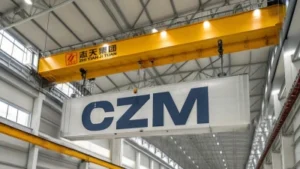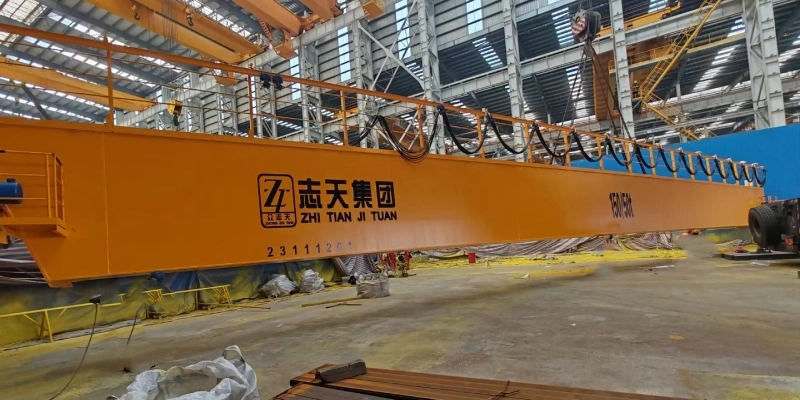
Factory Crane Selection and Solution Proposal: Tailoring Efficient and Safe Lifting Solutions for Your Facility
I. Introduction: Embark on Your Smart Lifting Journey
1.1 Why Does Your Factory Need the Right Crane?
Cranes are very important in today's factories. They do more than just lift things. They help make production automatic. By using the right cranes, factories can make work easier for people and improve how well they work.
This improvement helps the whole production process. Cranes are used in many industries like warehouses, machining, metalworking, wind power, cars, trains, and construction. So, picking the right crane is a smart move. It can help the factory make more money by cutting costs, making work faster, reducing maintenance, and saving energy. Cranes help factories improve how they work, cut costs, and use resources better.
1.2 How Will This Proposal Help You?
This proposal will help factories that don't know much about cranes. It will explain the basics, different types, important features, and things to think about when picking a crane. It will also talk about new trends like smart and automatic cranes.
This report will give clear information. It will help factories understand why cranes are important. With this proposal, factories can learn how to pick the best crane for their needs. This will help them make smart choices, be more efficient, and stay safe when lifting things.
II. Basic Overview of Factory Cranes
2.1 Understanding Common Factory Crane Types
Cranes are machines that lift and move heavy things using hooks or other tools. There are different kinds of cranes for different factory buildings, materials, and jobs. The most common ones are overhead cranes, gantry cranes, jib cranes, and flexible beam cranes. There are also special cranes for tough jobs.
2.1.1 Overhead Cranes: The Mainstay of Internal Material Handling
Overhead cranes are like bridges that go over factories, warehouses, and yards. They are held up by tall posts or metal frames. They are one of the most used lifting machines in factories.
Overhead cranes are known for being good, small, light, safe, and easy to use. They can handle different jobs. They help factories save money on buildings because their design can make the building stronger. They also make work faster, cut maintenance costs, and save energy. This helps factories make more money. Overhead cranes are used in many industries like warehouses, machining, metalworking, wind power, cars, trains, and construction.
Regular overhead cranes can lift up to 600 tons. They are divided into single-girder and double-girder types. Single-girder cranes lift 1 to 20 tons, while double-girder cranes lift 21 to 60 tons. Special ones can lift up to 400 tons. Double-girder cranes are light and strong. Single-girder cranes are light and use space well. Overhead cranes are a basic choice for lifting things inside factories because they are useful, good, and help make money.
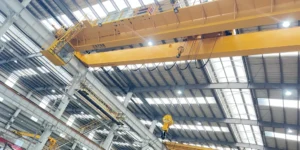
2.1.2 Gantry Cranes: Flexible for Sites Without Corbel Supports
Gantry cranes have a metal frame that looks like a gate. They have two legs that hold up the main beam. They can move on rails on the ground. The main beam can stick out on both ends to reach farther.
These cranes are good for yards and factories without supports. This means they can be used when the factory can't hold up overhead cranes or when lifting large things outside. They don't need to be supported by the building. This makes them good for saving space, especially when they need to be moved or used in open areas.
Like overhead cranes, gantry cranes are used in industries like warehouses, machining, metalworking, wind power, cars, trains, and construction. They can lift up to 400 tons. They are divided into semi-gantry and full gantry cranes. Gantry cranes are useful because they are independent and can be moved. This makes them a good choice for certain places and for saving space.
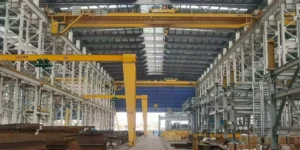
2.1.3 Jib Cranes: Ideal for Small-Area Workstation Operations
Jib cranes come in different types. They can lift different weights, turn different amounts, and have different arm lengths and features. They are easy to install, place things carefully, easy to use, and cheap. These cranes are used for lifting things in small areas.
Jib cranes are used for moving things at certain workstations. They are good for small areas. They make moving things faster and improve how well people work. They can turn up to 300 degrees to reach different spots. By making certain jobs faster, these cranes can help the whole production line work better. They also make work easier for people and improve the workstation.
Jib cranes are good for jobs that need careful lifting in small areas. They are used in warehouses, machining, metalworking, cars, trains, construction, and tunnel building. They can lift up to 10 tons. Some can lift up to 2000 kg. They can be put on posts or walls, depending on the factory. Jib cranes help make certain jobs faster and more comfortable for workers. They can be used even when there are larger cranes in the area.

2.1.4 Flexible Beam Cranes: Preferred Solution for Light, Low-Headroom Factories
Flexible beam cranes are made with standard parts that can be put together in different ways. They are easy to install. They can be changed to fit new factory layouts or new ways of making things. They are made to be used for a long time and changed as needed.
These cranes are very light. The wheels and track don't rub much. This makes them easy to use, even by hand. They can quickly move heavy things that are hard to move otherwise. They are easy to install, light, don't need much maintenance, and can be set up in many ways. Flexible beam cranes are good for factories with low ceilings and light loads. They can be used when regular overhead cranes can't fit.
Flexible beam cranes are used in industries that need light and flexible cranes. They are used in warehouses, machining, metalworking, cars, trains, and construction. They can lift up to 2 tons. For factories with old buildings, low ceilings, or changes in production, flexible beam cranes are a good choice. They can be changed to fit new needs. This saves money because factories don't have to buy new equipment when things change.

2.1.5 Special Cranes: Customized Tools for Unique Operating Conditions
Special cranes are made for unique jobs that regular cranes can't do. They use the crane maker's experience and design skills. These cranes are made for certain jobs. They are safe, work well, are built well, and can be set up in many ways.
These cranes are used in industries that need very good equipment, safety, and the ability to work in different environments. They are used in paper, wind power, waste, mining, shipbuilding, military, and space industries. For factories that work in special, dangerous, or extreme places, regular cranes often can't do the job. So, these factories need special cranes to keep things running, keep people safe, and follow the rules. The value of these cranes is that they make sure equipment works right and people are safe.
Table 1: Comparison of Common Factory Crane Types
| Crane Type | Typical Application Scenarios | Max. Lifting Capacity (tons) | Key Features | Factory Structure Requirements |
|---|---|---|---|---|
| Overhead Crane | Large-scale internal material handling | 600 | Superior performance, compact structure, high ROI | Requires factory corbels or load-bearing beams |
| Gantry Crane | Outdoor stockyards or factories without corbels | 400 | Gate-shaped frame, ground-running, adaptable to sites without corbels | Ground rails, no factory structure support needed |
| Jib Crane | Single workstation or small-area operations | 10 | Easy installation, precise positioning, effortless operation, high cost-effectiveness | Pillar or wall-mounted |
| Flexible Beam Crane | Low-headroom, light-duty factories | 2 | Modular, lightweight, maintenance-free, suitable for low-headroom factories | Low-headroom, light-duty factories, no heavy structural support needed |
| Special Crane | Extreme environments/special processes | Customized | Professionally customized, safe and efficient, reasonable structure | May have special factory structure requirements based on customization needs |
2.2 Understanding Key Crane Performance Indicators
When picking a crane, it's important to know its key features. These features show what the crane can do. They also help with designing, picking, and meeting safety rules. Knowing these things helps factories make better choices.
2.2.1 Lifting Capacity: The Key to Load-Bearing Capability
Lifting capacity is the most weight a crane can safely lift and move. This is the most important thing to think about when planning any lifting job. It affects how safe and fast the work is.
When looking at lifting capacity, it's important to know the difference between "rated load" and "effective load." Rated load is the most weight a crane can lift under perfect conditions. Effective load is the weight a crane can safely lift under real conditions.
Many things affect the effective load. The lifting angle is important. The lifting capacity changes with the angle. A steeper angle usually means a higher lifting capacity. The radius is also important. The radius is the distance between the crane and the load. A larger radius means a lower lifting capacity because it takes more force to lift the load. Also, weather conditions like strong winds, very hot or cold temperatures, or uneven ground can affect how well the crane works. This can lower the safe lifting capacity.
For factories, it's not enough to just know how much the crane can lift in theory. It's more important to know how much the crane can safely lift under real conditions. This means that when picking a crane, you can't just look at the weight it can lift. You have to think about how it will be used and what the conditions are. This will help avoid accidents, damage, and delays. It's important to follow the maximum effective load. The crane maker will give information about how much the crane can lift at different angles and distances. Operators need to know these details and the crane's limits.
2.2.2 Lifting Height and Handling Range: Defining the Working Space
Lifting height is how high a crane's hook can go. This is often called the hook path. This shows how high a load can be lifted. It affects how the crane can be used.
At construction sites, large warehouses, or factories with many floors, cranes need to work at different heights. It's important to have enough lifting height to move materials and equipment and make work flow well. Lifting height depends on things like the length and material of the lifting rope, the type of crane, and how stable it is.
Besides lifting height, the crane's horizontal reach is also important. This depends on the crane's span, boom length, and whether it can reach out or telescope. For example, a cantilever crane can reach up to 2.5 meters past the track. A telescopic crane can avoid things like pipes, wires, and posts in the factory. It can put materials right where they need to be.
It's important to know the lifting height to avoid accidents and keep the crane stable. For example, a limit switch can stop the hook from going too high. This can prevent the rope from breaking or the load from falling. For factories, it's not enough to know how heavy the material is. It's also important to know where the material needs to be picked up, how high it needs to be lifted, and where it will be put. It's also important to think about what's in the way inside the factory. This three-dimensional look at the workspace affects how the crane is designed. This affects how much it costs and how well it can move materials.
2.2.3 Working Frequency and Intensity: Impacting Equipment Lifespan and Efficiency
The crane's working class shows how long it will last. It looks at the lifting capacity, how many times it will lift things, and the load conditions. Picking a working class that matches how often and how hard the crane will be used is important. This helps make sure the equipment works well for a long time and saves money.
Cranes shake and have forces on them when they work. Research shows that the shaking from the trolley doesn't affect the structure much when it's low-frequency. But when it's high-frequency, the main beam shakes because the trolley hits the track joints. By making the crane boom's natural frequency better, the crane can be more stable and last longer.
For factories, it's important to understand the idea of "working class." A crane with a higher working class may cost more at first. But it's made to be used more often and with heavier loads. It will last longer. This saves money on maintenance, reduces downtime, and makes the equipment last longer. This helps factories think about the total cost of owning the crane and how much money it will save in the long run. It shows that the crane is strong and reliable.
III. In-Depth Considerations for Factory Crane Selection
3.1 Detailed Analysis of Material Handling Needs
3.1.1 Weight, Volume, and Characteristics of Materials to be Lifted
The weight of the material is the most important thing to know when picking a crane. It shows how much weight the crane needs to lift safely. Knowing the weight of the material is important for keeping the crane safe and avoiding accidents.
The size and shape of the materials affect what kind of lifting tools are needed, like hooks, clamps, or suction cups. They also affect how much space the crane needs to move. Large or oddly shaped materials may need special lifting tools or crane designs to keep them safe and stable.
What the materials are made of affects what kind of crane is needed. For example, if the crane needs to lift hot liquid metal, explosive materials, or harmful gases, it needs to have special safety features, heat-resistant materials, explosion-proof parts, and insulation. For example, cranes that lift hot metal need to have a cabin with insulation, explosion-proof glass that blocks heat, and air conditioning. This keeps the operator safe and comfortable. The wire ropes need to be made of heat-resistant materials like asbestos or metal.
For factories, it's not enough to just know how much the material weighs. It's also important to know what the material is like. This affects what safety features are needed, what parts are needed, and how the crane is designed. Not knowing these things can cause safety problems, rule breaking, and equipment failure. So, knowing what the materials are like is important for designing safe, rule-following, and long-lasting cranes. This affects how complex and expensive the crane will be.
3.1.2 Lifting Frequency and Efficiency Requirements
How often and how hard the crane will be used is important for picking the right working class. If the crane will be used often and for long periods of time, it needs to have a higher working class. This makes sure the crane is strong, the parts last long, and it works well over time. This affects how much the crane costs at first and how much it will cost to maintain.
Today's industries need to move materials faster. Using automatic and smart technology can help improve how well the crane works. It can reduce how much people need to do and how long it takes. For example, smart cranes can load things automatically, know what's happening, communicate with the cloud, and work well with people. This can make the whole production process 30% to 50% faster. Anti-sway systems can stop loads from swinging. This can make work faster and safer.
For factories, it's not just about whether a crane can lift a load. It's also about how often and how fast it needs to lift things. Buying a crane with a higher working class and adding automatic features will save money in the long run. It will reduce downtime and make more products. This shows that it's worth spending more money on a better crane.
3.1.3 Material Handling Path and Operating Range
Knowing how high the materials need to be lifted and how far they need to be moved is important for picking the right crane. This affects things like the lifting height, span, and boom length.
The paths that materials take are often complex. They may need to avoid things in the factory like pipes, wires, posts, or machines. Special cranes like telescopic beam cranes can help with this. Their beams can reach out up to 2.5 meters to avoid things and reach the right spot.
When cranes are working, their moving parts need to stay a safe distance from buildings, other machines, and power lines. Also, the space between the crane's cabin and the walkway needs to be less than 0.3 meters to keep people safe. For factories, it's not enough to just look at a floor plan. It's important to think about the crane's whole three-dimensional space, including how high it goes, how far it reaches, and what things are in the way. This can show if special features are needed to make the most of the space and keep people safe. This means that crane solutions need to fit in with the factory's layout.
3.2 Factory Structure and Environmental Conditions Assessment
3.2.1 Impact of Factory Headroom, Span, and Column Spacing
How high the factory ceiling is affects how high the crane can lift. For example, flexible beam cranes are good for factories with low ceilings because they are light. Overhead cranes can use the factory's space well. But they can only be installed so high.
How wide the factory is affects how long the overhead crane's main beam needs to be. The wider the factory, the more the crane and the building will cost. For one-story buildings, a width between 21 and 30 meters is usually best.
How far apart the factory columns are affects what kind of crane is needed and how much steel the factory needs. For one-story buildings that need cranes that lift over 10 tons, it's best to have the columns 6 meters apart. This can save money on building the factory and installing the crane. It also makes it easier to use and take care of the crane. For factories, the size of the building affects what kind of crane can be used. It also affects how much the crane and the building will cost. Thinking about these things early can save money and make the factory work better. This means that picking a crane is part of planning the factory.
3.2.2 Existing Factory Load-Bearing Structure and Crane Installation Requirements
Different kinds of cranes need different kinds of support from the factory. Overhead cranes need tall posts or metal supports to hold their tracks. Gantry cranes don't need to be held up by the factory. They can run on rails on the ground. Jib cranes can be put on posts or walls. They need to be strong enough to hold the crane.
The crane company usually takes care of everything, including the crane, the safety rails, and the tracks. The crane tracks need to be put down following the rules. Crane stops need to be put on both sides to keep things safe. When the crane is being designed, it's important to think about how easy it will be to build, move, put in place, and take care of.
The crane company also needs to get the right licenses and train people to use, take care of, and fix the crane. This makes sure the crane is used safely and follows the rules. The crane's power line should have a safety rail. There should be lights every 50 meters to show that the power is working. For factories that don't know much about cranes, it can be hard to install the crane, follow the rules, and train people. It's helpful if the crane company takes care of everything. This makes the factory feel safe and confident. This shows that the crane company is a good partner that not only gives a product but also makes sure it's safe and ready to use.
3.2.3 Special Environmental Challenges: High Temperature, Humidity, Dust, Corrosive Gases, and Explosion-Proof Requirements
Cranes that work in special places need to be designed to be safe, reliable, and work well.
-
High-Temperature Environments: Cranes in hot places need to be designed to handle the heat. For example, cranes that lift hot metal need to have a cabin with insulation, heat-resistant glass, and air conditioning. The crane parts and electrical parts need to be insulated and cooled. The wire ropes need to be made of heat-resistant materials. High temperatures can also make electronic parts fail. So, they need to be watched closely and taken care of.
-
Humid Environments: Cranes outside are in humid places. The tracks and cable areas need to have good drainage. The electrical rooms need to be kept dry. Equipment that can get wet needs to be insulated to prevent damage.
-
Dusty Environments: Factories that make smoke and dust should be away from clean rooms. Places that make smoke and dust need to have dust collectors, ventilation, and cleaning machines. These need to follow the rules. In places with explosion risks, there needs to be good airflow to keep the dust levels low.
-
Corrosive Gas Environments: Factories that make harmful gases should be in a good place. They should be downwind and have good airflow. The metal parts of the crane need to be strong and free of damage. The crane needs to be made of materials that don't corrode easily.
-
Explosion-Proof Requirements: Explosions need three things: something that can burn, oxygen, and something that can start the fire. So, in places with explosion risks, the electrical parts of the crane need to be explosion-proof. Crane companies need to prove that their products follow international rules like the ATEX directive. Operators need to know the risks and make sure the equipment is safe.
Table 2: Impact of Factory Environmental Conditions on Crane Selection and Countermeasures
| Environmental Condition | Potential Impact | Crane Selection and Countermeasures | Relevant Safety Standards/Guidelines |
|---|---|---|---|
| High Temperature | Equipment overheating, electronic component failure, operator discomfort | Operator cabin insulation/AC, infrared-resistant glass, high-temperature resistant wire ropes, electrical compartment cooling | GB50034 |
| Humidity | Electrical insulation damage, metal component corrosion, equipment malfunction | Good drainage system, equipment insulation treatment, anti-corrosion coating | GB6067.1 |
| Dust | Increased mechanical wear, electrical short circuits, explosion risk | Equipped with dust collection hoods, ventilation and dust removal systems, explosion-proof design | GB8959 |
| Corrosive Gases | Material corrosion, reduced structural strength, equipment damage | Selection of corrosion-resistant materials, special protective coatings, enhanced ventilation | AQ 7016-2025 |
| Flammable/Explosive Gases/Dust (Explosion-Proof) | Explosion risk, severe casualties, equipment damage | Selection of electrical equipment and components meeting corresponding explosion-proof ratings, area classification, strict control of ignition sources | ATEX Directive, IEC 60079/EN 60079 |
3.3 Intelligence and Automation Trends
3.3.1 Efficiency and Safety Improvements from Semi-Automated and Fully Automated Cranes
Making overhead cranes automatic can help factories be more productive and safe. Automation can make work easier for people and machines. It can also solve safety and material handling problems. Using smart lifting machines can help the mechanical manufacturing industry make more products.
Automatic cranes can do jobs that are programmed ahead of time. This is much faster than doing things by hand. By checking alarms and performance, problems can be fixed quickly. This helps the crane work better.
Anti-Sway Control is a key feature of smart cranes. It can stop loads from swinging when the crane moves. This makes work faster, improves safety, and helps people and things stay safe. The anti-sway system uses a camera and math to place things carefully. It works well even when it's dark.
Smart cranes can place things very carefully. For example, they can stack containers within ±35mm. They can place things automatically within ±30mm. This helps things work smoothly and reduces problems. For factories, automation is important for working well and keeping people safe. By reducing mistakes, keeping people out of dangerous places, and making materials flow better, automatic cranes can save money and make the factory safer and more reliable. This can also lower insurance costs and reduce accidents.
3.3.2 Development and Future Outlook of Smart Crane Technology
Smart lifting machines are the newest thing in the crane industry. They use sensors and smart software to work as a team. They can feel, understand, decide, and control things. This helps people, machines, and materials work together. It replaces people's eyes, brains, and hands. This helps cranes change to fit the work.
Smart cranes have many features, including:
- Automation (automatic planning, knowing what things are, avoiding problems, and remote control)
- Interconnectivity (working with factory computers, service networks, data networks, and the internet)
- Informatization (using smart parts to understand information)
- Deep intelligence (using sensors and cameras to watch and decide things)
The smart lifting machine market is growing fast. From 2016 to 2020, it grew by 21.4% each year. It is expected to keep growing fast for the next five years. This shows that smart cranes are the future. Today, smart lifting machines in China are stable and useful. Most can load things automatically, know what's happening, communicate with the cloud, and work well with people. In the next 3-5 years, new technologies like the internet of things and big data will help smart lifting machines work even better and cost less.
Remote control and self-driving technology are becoming common. This lets people operate tower cranes in Changsha from an office in Shanghai. This shows that cranes in the future will be more flexible, safer, and able to work 24/7. For factories, buying smart cranes means they will be ready for the future. Their operations will be able to use data to get better, fix problems before they happen, and work with other factory systems. This helps the factory keep up with new technology, be competitive, and find new ways to be efficient.
3.4 Investment Budget and Project Cycle Management
3.4.1 Analysis of Crane Cost Components
Hydraulics, transmissions, and controls are expensive and make up over 40% of the total cost of making cranes. This makes it hard for crane companies to make a profit.
Steel is a very important material for making cranes. It makes up about 15% to 20% of the cost for construction machines. Changes in steel prices affect how much it costs to make and sell cranes. For factories, it's important to know these costs. This means that the price of a crane depends on the price of steel and the cost of parts from other countries. This helps people understand why prices might change. It also shows why it's important to have a reliable supply of parts.
3.4.2 Project Timeline and Customization Cycle Considerations
How much a crane is customized affects how long it takes to make and deliver it. For example, welding large parts can be done in the factory with machines. This can make the welding faster. For example, welding box girders can be 15% faster. Semi-automatic welding for H-beams can be over 30% faster.
Cranes usually last about 25 years. But drive control systems change quickly. This means they don't last as long. When equipment gets old, it can be hard to find parts. It can also be expensive to replace and take care of. So, it's important to upgrade cranes to make them last longer, work better, and be safer.
The world is building more things like logistics parks, ports, airports, and factories. This is making the market for material handling equipment like cranes grow. This strong market can affect how long it takes to deliver cranes and how much they cost.
IV. Conclusion and Solution Recommendations
This proposal helps factories understand how to pick cranes. By looking at crane types, important features, material handling needs, factory conditions, and new technology, we can make some conclusions and recommendations:
-
Demand-Oriented Selection is Fundamental: Picking the right crane starts with knowing what it will be used for. This means knowing the weight of the materials, what they are made of, and how often they need to be lifted. This will help decide what kind of crane is needed, how much weight it needs to lift, what safety features it needs, and how automatic it should be.
-
Factory Conditions are Decisive Factors: The factory's height, width, column spacing, and support structure affect what kind of crane can be used. Overhead cranes need support from the factory. Gantry cranes can work on the ground. Flexible beam cranes are good for factories with low ceilings. Knowing the factory conditions can help avoid changes and make sure the crane fits in well.
-
Environmental Challenges Require Customized Responses: Hot, humid, dusty, corrosive, and explosive environments need special crane designs. These cranes need to have special safety features and be made of special materials. This is important for keeping the equipment working well and keeping people safe. This is a cost that should not be ignored.
-
Intelligence is a Future Trend and Efficiency Multiplier: Automatic and smart technology can help move materials faster, save money on labor, and make work safer. Investing in smart cranes is a good move for the future. It can help factories be more efficient and save money in the long run.
-
Integrated Cost and Cycle Management: The cost of a crane depends on the equipment, parts from other countries, steel prices, and how much it is customized. The project also needs to consider making, installing, testing, and certifying the crane. Picking a crane company that takes care of everything can make the process easier and make sure the project is done on time and follows the rules.
Final Recommendations:
We recommend taking these steps to pick the best crane:
-
Detailed Needs Interview and Site Survey: A crane company should talk to the factory to understand what they need. They should ask about the materials, how much they need to lift, how fast they need to work, and what problems they have now. They should also look at the factory to see what it's like. This includes looking at the building's drawings, how strong it is, how high the ceiling is, how wide it is, and what the environment is like.
-
Customized Solution Design: The crane company should use what they learned to design a crane solution for the factory. This should say what kind of crane is needed, how much it can lift, how high it can lift, and how fast it can work. It should also say what safety features are needed for the factory's environment.
-
Return on Investment and Total Cost of Ownership Analysis: The proposal should show how much the crane will cost at first, how much it will cost to operate, and how much it will improve efficiency and safety. This will help the factory understand how much money the crane will save in the long run.
-
Safety and Compliance Assurance: Make sure the crane follows all the safety rules. The crane company should say what they will do to install the crane, test it, get it certified, and train people. This will make sure the crane is safe and follows the rules.
-
Intelligent Upgrade Path: The crane company should offer options to upgrade the crane with smart technology. This could include things like anti-sway systems and remote monitoring. This will help the factory improve in the future.
By following these steps, factories can find a crane solution that is efficient, safe, and saves money. This will help them be successful in the future.
You may also be interested in:
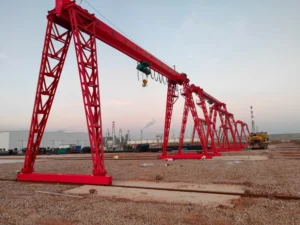
Newbie’s Guide: First Time Buying a Crane? Here’s What You Must Know!
Newbie's Guide: First Time Buying a Crane? Here's What You Must Know! leading paragraph: Buying a crane? It's more than just picking a big machine. Mess up, and your project
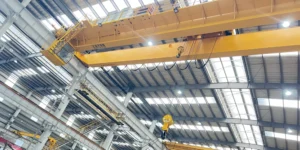
What are the different Types of Cranes?
What are the different Types of Cranes? As industries continue to advance, cranes are seeing increasingly widespread use across various sectors. Different types of cranes, with their unique structures and
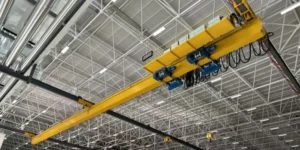
Characteristics of an Excellent Crane
A good crane usually needs to possess the following characteristics: Safe and Reliable: It is equipped with complete safety protection devices, such as overload protection, limit protection, anti-collision devices,
